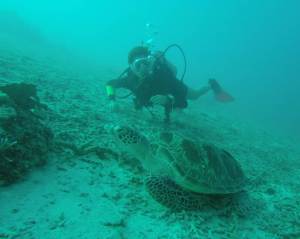
Turtles, turtles everywhere! From my first day on Pom Pom Island I became enthralled by these majestic sea creatures. The sheer number of sea turtles on the reefs and nesting around this island is quite impressive. We saw several turtles on each dive. On my first dive, a young green turtle swam right up to David and clung alongside for several minutes as if she were welcoming us to the island. Magical indeed! It then occurred to me that the turtle wanted help getting some algae off of her back, so I helped her out. She seemed very appreciative and I was grateful for that first sea turtle experience as well!
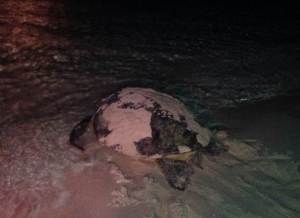
For two weeks, I went on nightly turtle walks with other volunteers at the Tropical Research and Conservation Centre (TRACC). TRACC had been involved in sea turtle conservation on Pom Pom Island for the last 5 years. They work closely with the Pom Pom Resort staff who help to collect eggs and maintain the turtle hatchery on the island.
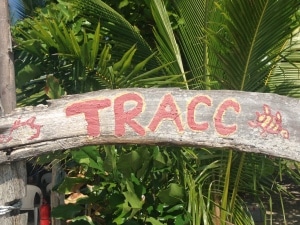
TRACC conservation volunteers hike around the island and alert the resort when a turtle is found nesting or a nest is detected. Once a nest is found, volunteers will stay at the nest until she has laid and covered her eggs so that poachers don’t take the eggs. It’s a race to get to the eggs sometimes and the police on the island cannot always be trusted. Turtle eggs go for 5 ringgit each and sometimes a much as $150US for a nest – a months salary for many Malay in Borneo.
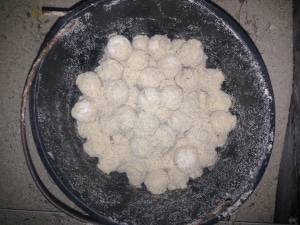
Their turtle specialists meet us at the turtle nest to help dig up the eggs. They take a stick and poke down into the nest to locate a hollow spot where the eggs are laid. Sometime it can take over 4 hours for a turtle to dig, lay and cover her nest! And if the volunteers don’t see where the turtle has laid the eggs, it can be very difficult to find the eggs. Long nights for TRACC volunteers…
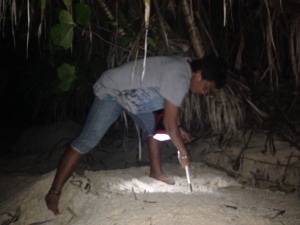
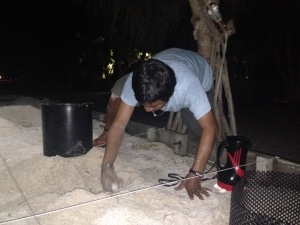
Baby green and hawksbill turtles are released from Pom Pom Resort about once a week in July. After hatching, they are kept at the resort until they are released into the sea at 5:30pm just before sunset. Turtles have very sensitive eyes and are attracted to light no matter what direction it comes from. At sunset turtles will swim toward the setting sun. Link to http://www.conserveturtles.
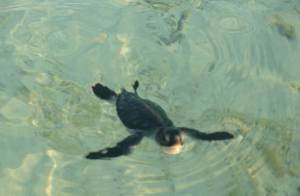
Turtles will also get confused and swim toward the bright lights on the beach. Light pollution is one of the greatest threats to sea turtles worldwide. This is why TRACC has no lights on the beach at night.
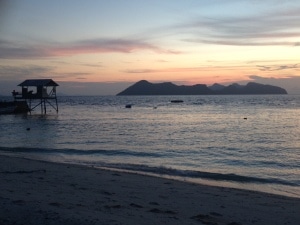
Most green turtles lay anywhere from 50 – 160 golf ball sized eggs on Pom Pom. Little baby turtles hatch after about 2 months! On our 2nd evening, we were excited to find out that turtles had hatched and we could join the turtle release! We arrived early to beat the crowd that had been predicted and found over a hundred dark gray little hatchlings in a bucket – so incredibly cute! Little children who gathered around the bucket were amazed and had a hard time not touching.
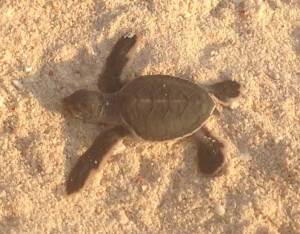
Click on this link to see a video of the hatchlings before being released:
Green turtle hatchlings just before release to sea
We then followed the turtle biologist to the beach on the west side of the island where the turtles would be released. The crowd was growing, including many Chinese tourists who come to the Pom Pom resort to see the turtles. Before releasing the newly hatched turtles, the biologist drew a cone in the sand for tourists to stand behind to give the hatchlings room to move toward the sea. This worked okay during our first release since the turtles ran feverishly toward the sea and plunged in ready for their ocean life ahead.
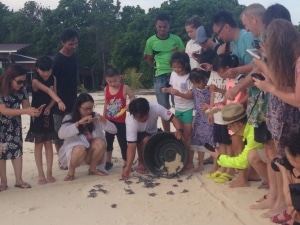
However, during our second week, we joined the release again. It didn’t go so well this time. Many tourists from Pom Pom resort totally disregarded the line and walked right into the turtle path to take photos, blocking my view to take photos and a large kid almost stepped right on a hatchling. It was so disappointing. We spoke to the turtle biologist afterwards to see if there would be a solution, such as better barriers or the turtle talks that TRACC staff could hold before the releases to teach tourist about their threats, biology and conservation.
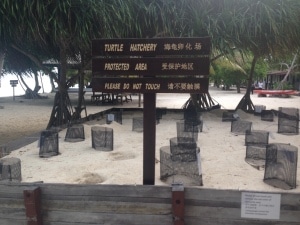
I joined turtle hikes on all the days that the tides were conducive to sea turtles accessing the beaches around Pom Pom to lay their eggs. The tides had to be high enough for the turtles to get through the shallows to locate a good location on the beach to nest. The best timing for sea turtles was on the 2nd to last day of our stay when high tide was around 10pm. We found a turtle each night for 4 nights laying on the east side of the island near the lonely mangrove.
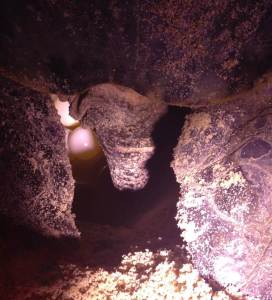
I had a premonition that this would be a big night and indeed it was! The last good tides for a while. A group of us headed clockwise around the island – David, Chloe, Danii, and Natalie. We immediately found turtle tracks at the beach just north of the TRACC field station. There was no clear nest so it may have been a false crawl.
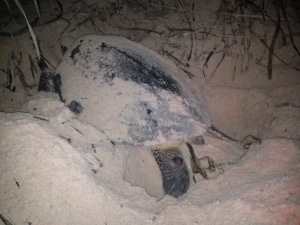
This is not a popular location for laying eggs since the moon is bright on this side of the Island. We continued to walk around the north side of the island where the beach is relatively small and difficult to access until we arrived at a nesting turtle near the lonely mangrove trees! This is the most popular location on the island for nesting. This was a huge female green turtle with a carapace more than 1 meter in length! She had just started digging the nest so we knew this would be a long night. I called Jussry Justin, the turtle specialist at Pom Pom Resort. He met up with us to find the eggs once she had finished laying and covering. We had staked the approximate location of the nest, but this evening we were not very lucky. We had to dig for over an hour to find the eggs. Success at last! She had buried the eggs between some roots and deeper than the usual forearms length. And there were 146 eggs!
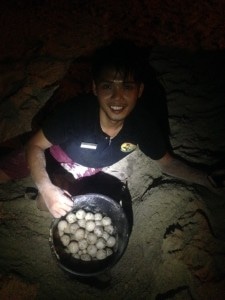
Jussry and I took the bucket of turtle eggs and transferred them to the new nursery built by WWF. He first poured water on the sand in the nursery and then dug a narrow deep hole that resembled the moher turtle’s nest. He gently put the eggs into the hole, covered them up and put a plastic fence around the top of the nest to prevent the turtles from escaping once they are born. And then we went to the next nest that a Chinese school group had found with TRACC volunteers earlier that night to dig the eggs up and transfer into the nursery! A long exciting and successful night indeed.
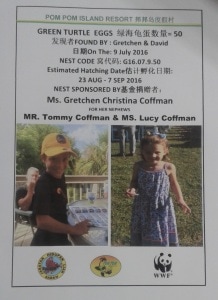
Happy Birthday to Tommy and Lucy Coffman! I sponsored two turtle nests for you. These turtles will hatch between August 23 and September 7 just in time for your birthdays!
